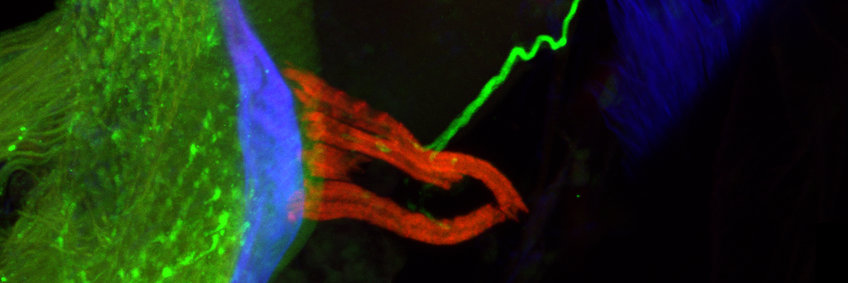
Active Sensing
Our eyes are constantly on the move. These movements reflect the features of the visual scene in which we are particularly interested, our arousal state, and other aspects of our general physiology. Despite their ubiquity, we are rarely aware of our eye movements because, at least in part, our brain suppresses visual perception during these movements.
We recently discovered that fruit flies move their retinas, via tiny muscles, both seemingly spontaneously and in response to visual motion. These movements and our vertebrate eye movements are surprisingly similar.
We aim to leverage this discovery, alongside the advanced genetic, physiological and behavioral methods in Drosophila to develop a detailed understanding of how a small brain differentiates between visual input that arises due to the animal’s own movements from input that arises due to events in the external world. And on the flip side – how do animals purposefully move their eyes to extract relevant visual features? Very broadly, this research program should allow us to better understand how brains form predictions and use those predictions to inform perception and behavior.